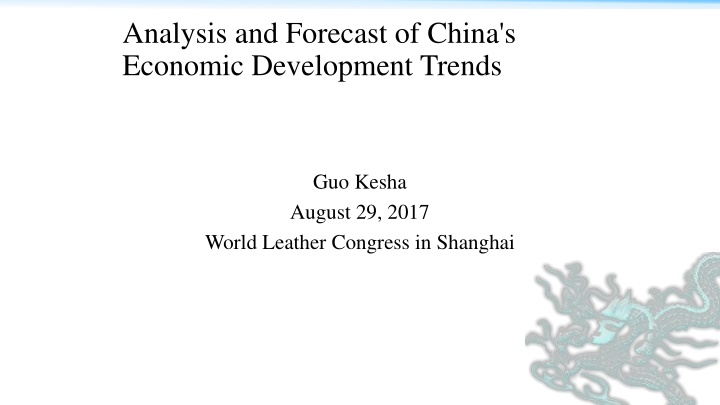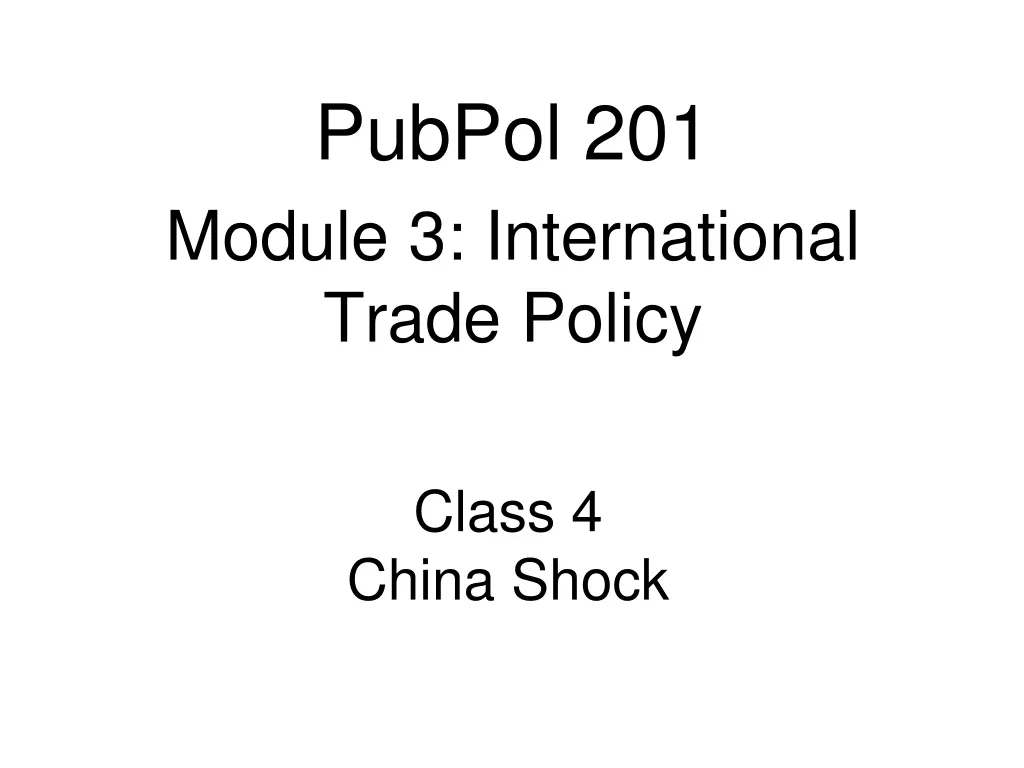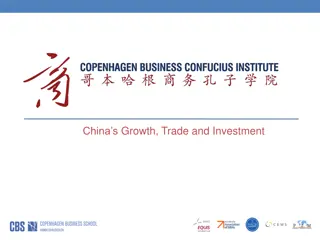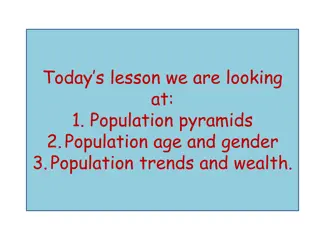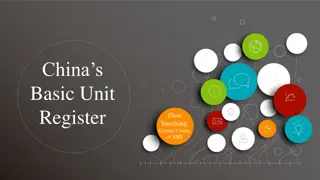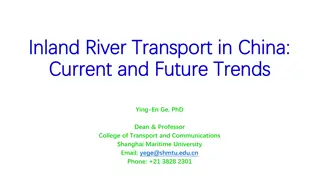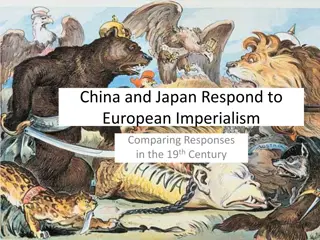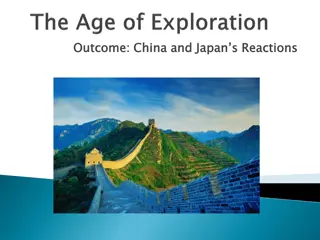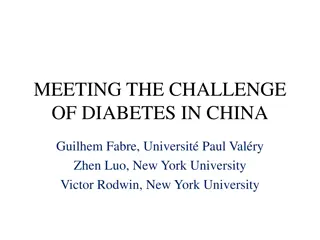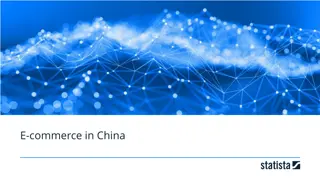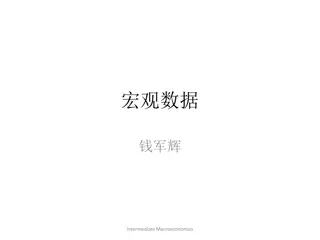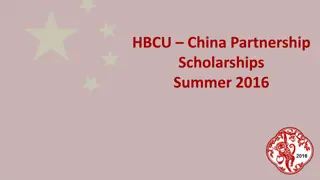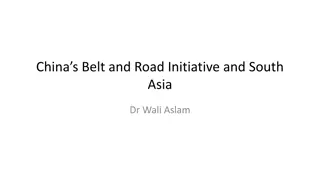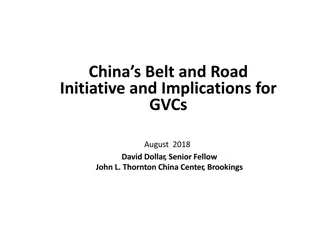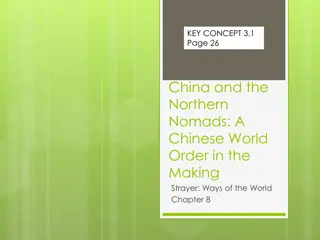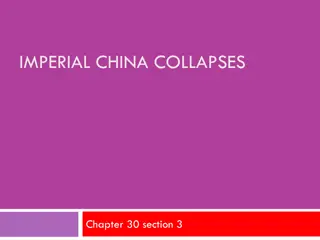Analysis and Forecast of China's Economic Development Trends - Guo Kesha Presentation
The presentation by Guo Kesha at the World Leather Congress in Shanghai delves into the analysis and forecast of China's economic development trends. It discusses whether a new cycle has opened for the Chinese economy, the potential for an L-type growth platform, and initial research on economic trends over the coming years. The content explores differing viewpoints on China's economic situation, the rebound in economic growth, and the debate regarding the initiation of a new cycle in the economy. Various economic cycles are examined, providing insights into the challenges and opportunities faced by the Chinese economy.
Download Presentation

Please find below an Image/Link to download the presentation.
The content on the website is provided AS IS for your information and personal use only. It may not be sold, licensed, or shared on other websites without obtaining consent from the author.If you encounter any issues during the download, it is possible that the publisher has removed the file from their server.
You are allowed to download the files provided on this website for personal or commercial use, subject to the condition that they are used lawfully. All files are the property of their respective owners.
The content on the website is provided AS IS for your information and personal use only. It may not be sold, licensed, or shared on other websites without obtaining consent from the author.
E N D
Presentation Transcript
Analysis and Forecast of China's Economic Development Trends Guo Kesha August 29, 2017 World Leather Congress in Shanghai
Three Questions: 1. Has a new cycle opened for the Chinese economy? 2. Is Chinese economy entering an L-type growth platform? 3. What is the initial research on China s economic trends over the next few years?
Since the fourth quarter of last year, China's economic growth has rebounded, especially the basic industries with strong periodicity, while the rebound dynamics from the supply-demand relationship to the price trend is relatively strong. There are different viewpoints on the judgment of China's domestic economic situation, and the difference is relatively large. In this regard, an in-depth analysis is necessary.
1. Has a new cycle opened for the Chinese economy? Recently, there is a dominant viewpoint domestically that the Chinese economy has opened or is opening a new cycle, which is a new cycle for production capacity or investment to expand widely. Following the four stages of economic cycle, the Chinese economy has entered a stage from recovery to prosperity, and economic growth is starting a new rise.
Many economists disagree with this viewpoint. I also do not support this viewpoint. However, this is unrelated to the stock market trend. I do not deny that the stock market may have a bout of volatility. In my opinion, the uptrend in the stock market is the result of fund promotion, rather than the new cycle. The possibility of this viewpoint on a new cycle that is consistent with the actual trend of China's economy can be analyzed and determined from two aspects.
First, the Chinese economy is currently having difficulties escaping cyclical problems. In terms of the cycle theory, based on the cycle time and nature division, there are the following types: Kinchen cycle: short business cycle, 3 years or so, inventory cycle. Juglar cycle: medium-term business cycle, 10 years or so, equipment investment cycle. Kuznets cycle: medium and long-term business cycle, 20 years or so, construction cycle. Kondratieff cycle: long-term business cycle, 50-60 years, technology cycle (also called the integrated cycle by Joseph Alois Schumpeter).
The new cycle mentioned here refers to the Juglar cycle or the medium-term cycle. Investment in equipment is mainly investment in industrial fixed assets. However, China's industrial production is still in serious over-capacity, and business prospects for the market are not optimistic, especially for private manufacturing enterprises. In this context, large-scale investment in fixed assets will be impossible.
There is a rebound in economic growth this year, which is due to the greater role played by short-term factors and policy factors. First is the policy effect of de-capacity and destocking. This results in a major change in the supply-demand relationship in the short term and the sharp rebound of Producer Price Index from the bottom, prompting enterprises' re-stocking and driving production expansion. Second is the rapid growth in exports. This has benefited from the recovery of international markets, the gradual expansion of export structure, the enhanced foreign trade policy effect, and the rapid growth of exports to the countries along "the Belt and Road".
However, the above two aspects are not sustainable, while the unstable and uncertain factors are still present. The whole economy does not show a sustained upward trend, nor significant economic recovery factors. In other words, it is unlikely to go out of the cycle constraints or open a new cycle.
From an international perspective, the global economic recovery is still difficult and bound to the dilemma of low growth, with the impact of the economic cycle. This brings serious external constraints on the China s economic trend. From the domestic perspective, China's economic trend is still influenced by the industrial cycle, real estate cycle, role of local government cycle, etc., so that the opening of a new cycle is unlikely.
Second, the deep-seated problem of China's economy is the new normal rather than the new cycle. At present, the new normal or new stage has become the background of China's economic development. In the staggered influence of aggregate and structural problems, the structural contradiction is more prominent, that is, industrialization has entered a later stage, and there exists an obvious contradiction that the supply structure is not suited to the demand structure, restricting effective economic growth.
With the mutual influence of the new economic normal and the economic cycle, the new normal is the major situation that we are facing, and is also the main contradiction in the economic operation. On the premise that economic development enters a new normal or new stage, the impact of cyclical factors is relatively small or diminishing, especially the role of the medium-term cycle or equipment investment cycle which will be diluted or even submerged by large development stages. Regardless of the opening of a new cycle, this is not the main problem for the economic operation and growth. In other words, it is impracticable to open a new cycle in the absence of a solution to the contradiction of the new economic normal.
2. Does the Chinese economy enter an L-type growth pattern? Another viewpoint is that China s economic growth has stabilized and is now in an L-shaped growth state, and the growth rate will not reduce further although it will not increase significantly. This viewpoint is justified but may be overly optimistic. Moreover, this may lead to a certain degree of policy risk, so it is necessary to take it into account and make an in-depth analysis.
If the economy has no downward pressure, the steady growth policy can be withdrawn. However, if the policy is now withdrawn or there is any signal of withdrawal, economic growth may start to decline soon.
Based on international experience, the average annual economic growth rate has fallen sharply after the changes to development stages in some countries or regions. The main reason is that the average annual growth rate of demand has dropped significantly. Of this, the growth rate of domestic demand is the main change and especially influences the growth rate of investment. China's economic growth is also facing the same problem. Now, the downward pressure on investment growth is still present, and this will affect consumption the export growth rate, so that the downward pressure on economic growth is still present.
The chart below shows that investment growth has a new downward trend Fixed asset investment (excluding farmers) year-on-year growth rate Jan.-Aug. Jan.-Nov. Jan.-Dec. Jan.-Mar. Jan.-May Jan.-Apr. Jan.-Sep. Jan.-Feb. Jan.-Oct. Jan.-Jun. Jan.-Jul. Jan.-Jul. 2016 2017 2016 2016 2016 2016 2016 2017 2017 2017 2017 2017 Source: State Statistics Bureau, askci Corporation
There are two possibilities for economic L-type growth: One is L-type growth that is more dependent on policy, and the other is L-type growth that is primarily driven by market forces. At present, China's economy is still in the former situation, which requires adoption of policies combining multiple measures with long- term and short-term programs; in particular, it is necessary to adhere to the stable and continued promotion of reform, so that economic growth changes to the latter situation.
3. What is the initial research on China's economic trends over the next few years? We still have three years or more to achieve the goal that a well-off society will be built and the GDP and per capita income of urban and rural residents will be quadrupled as of 2020. In this period, China's economy should pay attention to the influences of "opening a new cycle" or "L-type growth" and other viewpoints, and adhere to the comprehensive policy of steady growth, structural adjustment, reform promotion, risk prevention and benefit livelihood to enhance the policy effects.
GDP growth this year is estimated to reach 6.7%-6.8%, and this year will become the first year with growth rate that has not continuously declined since 2010. For the next three years, there will be a downward pressure on economic growth, but the average annual growth rate is expected to reach or be close to 6.5% with the influence of macroeconomic policies. In the next few years, the conditions for inflation will not be formed, and it is estimated that the average annual CPI increase rate will be about 2%.
The main macroeconomic policy mix to promote stable economic growth, structural adjustment and upgrading, growth momentum conversion is to focus on the structural reform of the supply side, moderately expand aggregate demand, and strengthen the expected management. The three factors should be combined organically to avoid the deformation of some aspect. Policy continuity and stability should be maintained, so as to avoid economic fluctuations due to policy fluctuations. In the above economic growth and policy environment, the residents' consumption will grow steadily and the consumption structure will continue to be upgraded.
China's social consumer goods retail sales and year-on-year growth Total Retail Sales of Social Consumer Goods (100 Million Yuan) Time Month value Year-On-Year Growth (%) Cumulative Value Year-On-Year Growth (%) Jan.-Jul. 2016 Jan.-Aug. 2016 Jan.-Sep. 2016 Jan.-Oct. 2016 Jan.-Nov. 2016 Jan.-Feb. 2017 Jan.-Mar. 2017 Jan.-Apr. 2017 Jan.-May 2017 Jan.-Jun. 2017 Jan.-Jul. 2017 Source: askci Corporation
The development of China's leather industry, in general, remains consistent with the changes in the industrial growth. Driven by the upgrading of consumer structure, high-end leather products will have more potential for development.
